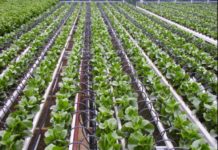Innovations in solar-powered agricultural equipment, such as solar water pumps, solar mills, and solar refrigeration, could generate nearly 40,000 jobs in rural Kenya, new research shows. The report, “Green Jobs for Rural Youth”, highlights how these innovative, solar-powered farming appliances are proven to create sustainable livelihoods and improve economic growth.
The report takes a closer look at Kenya’s French bean crop – which accounts for 20% of the volume of total fresh vegetable exports – and for the first time quantifies the job creation potential of employing renewable energy equipment in its production. Solar water pumps and cold chain technologies are the most accessible solutions, and demand for these appliances is expected to grow significantly by 2030.
These technologies can increase agricultural productivity, reduce post-harvest losses, and create diverse job opportunities. By 2030, the solar irrigation sector alone is expected to create 5,000 direct and 33,000 indirect jobs with roles in sales, technical support, farm labor, processing, and storage.
“Attracting and retaining young talent in agriculture is challenging. Youth often perceive agriculture as low-prestige and low-income. Innovations that improve mechanization, integrated with latest digital technologies reignite their interest,” explains Abigail Kuria, the lead researcher from Efficiency for Access. These jobs pose exciting opportunities for rural youth to gain technical expertise and improve their long-term employability. “This is a game-changer for rural youth. By adopting these technologies, we can empower a generation with transferable skills and long-term jobs while driving sustainable development and improving millions of lives,” Kuria added.
To fully realize these benefits, supportive policies and financing initiatives are essential. Governments, investors, and industry stakeholders need to come together to create innovative financing models like pay-as-you-go systems to make these technologies more accessible. They need to work together to boost adoption of these products in the agricultural sector and improve consumer awareness of the advantages of these technologies.
There is also a huge opportunity to enable rural skill development through internships, apprenticeships, and job training programs. “Investing in these technologies is not just about boosting agricultural productivity; it’s also about creating decent jobs for our youth and ensuring a sustainable future for our rural communities,” added co-author Hannibal B. Tesfahunegn from Power for All.
For more information about “Green Jobs for Rural Youth: Unlocking Renewable
Energy’s Potential in Agriculture” please contact:








